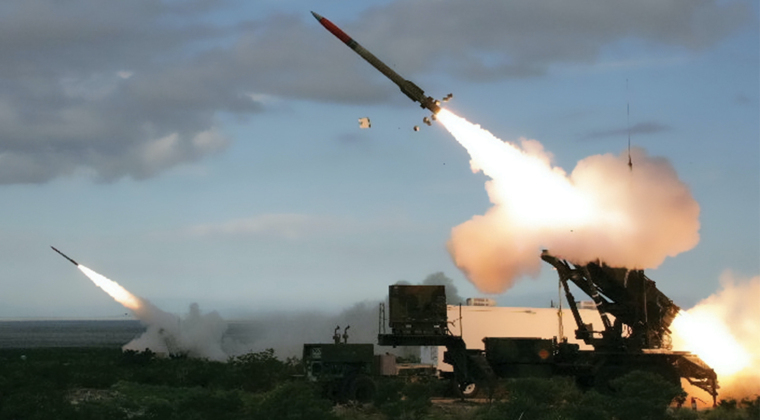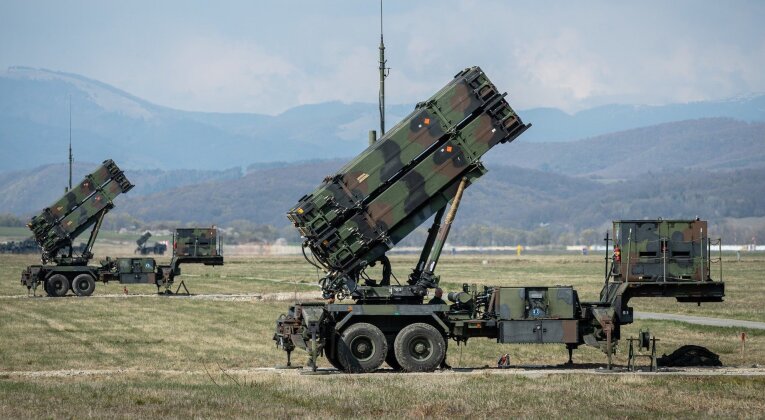News
Will Patriot Air Defence Systems Save Ukraine? Combat Record Leaves Much Room For Doubt
On December 22 it was announced that the United States would delivery Patriot air defence systems to the Ukrainian armed forces, with a range of other weapons systems including air launched guided weapons also set to bolster the Eastern European state’s capabilities in its ongoing war against Russia. Although the quantity of Patriot systems was not disclosed, the total size of the aid package at just $1.85 billion indicates that they will not be delivered in meaningful numbers unless followup deals are signed in future. Romania’s contract to acquire seven Patriot Configuration 3 units, for example, alone cost $3.9 billion while a recent Polish deal for the same system cost $4.75 billion. Although the Patriot has been hailed as a vital asset for Ukraine as its own air defences are increasingly depleted, and as the possibility of major cities being abandoned has continued to grow amid sustained Russian strikes on key infrastructure, its delivery is expected to be far from pivotal for a number of reasons beyond the very small numbers expected to be sent. These include the small scale on which the Patriot is produced and fielded relative to the S-300 systems Ukraine previously relied on, meaning meaningfully replacing the S-300 network with Patriots remains unfeasible, as well as the American missile’ system’s performance record against attacks far more basic than those which Russia is capable of which has repeatedly brought its effectiveness to serious question.

The Patriot first saw combat during the Gulf War in 1991, during which its primary target was the Soviet Scud B – a missile which had first entered service in 1964 and by the 1990s was very far from state of art. Although the Patriot’s performance was touted as a success, later investigations into its performance found this to have been far from the case. The American House Government Operations Subcommittee on Legislation and National Security accordingly reported on government coverage of the Patriot Missile defence and its capabilities: “The Patriot missile system was not the spectacular success in the Persian Gulf War that the American public was led to believe. There is little evidence to prove that the Patriot hit more than a few Scud missiles launched by Iraq during the Gulf War, and there are some doubts about even these engagements. The public and the Congress were misled by definitive statements of success issued by administration and Raytheon representatives during and after the war.”
A military report titled ‘Patriot Missile System Effectiveness During Desert Storm,’ released in 1992, stated that of the 158 missiles fired from Patriot systems by the U.S. Military during the Gulf War, 45 percent were launched against false targets. A 1992 report prepared by nuclear weapons expert and Ploughshares Fund president Joseph Cirincione for the U.S. House of Representatives Government Operations Committee on the Patriot’s performance stated that due to the limited damage caused by Scud missiles the public was mislead to attribute this not to Iraq’s limited capabilities, but to the success of the air defence system. Meanwhile the substantial “evidence to the contrary was neglected or dismissed.” “The Scuds were wildly inaccurate. Most fell harmlessly into the sea or the desert,” it stated to explain why Iraqi missiles did not cause more damage despite the poor capabilities of the Patriots.

An early 1990s study of the performance of Patriot systems in the Gulf War by Theodore Postol, Professor of Science, Technology and International Security at the Massachusetts Institute of Technology, highlighted: “The Patriot’s intercept rate during the Gulf War was very low. The evidence from these preliminary studies indicates that Patriot’s intercept rate could be much lower than 10 percent, possibly even zero.” Despite their “miracle performance” of the Patriots being hailed by the Military and by their producer Raytheon, Postol concluded that the system had most likely failed to shoot down a single Scud in Iraq, and at most may have possibly shot down a single one. Postol noted that even “the most primitive of adversaries” could easily evade the Patriot system, and his investigation was backed by evidence from several of those involved in the program and employees of the defence contractor responsible for the Patriot’s production.
Although the Patriot’s performance in the Gulf War was questionable, it was hoped that the system’s modernisation in subsequent decades would make it more reliable at the very least against basic Scud type missiles which are still widely relied on across several continents. Such hopes were largely dashed, however, by the system’s failure to intercept a strike by makeshift missiles launched by Yemeni insurgents against Saudi Arabia in 2017. Targeting Riyadh’s King Khalid International Airport, missiles were shown by satellite imagery not to have been neutralised and instead, much like the Iraqi Scuds, landed nearby due to poor accuracy. Analysis of photos and videos of the strike widely posted on social media confirmed this. Analysis conducted by a research team of missile experts showed a warhead flying unimpeded over Saudi Arabia despite its large arsenal of modernised Patriot batteries, concluding that the missile came close to its target. Jeffrey Lewis, the analyst who led the research team, stated regarding the failure of the Patriot system to perform even the most basic interception and the depiction of failure as a victory: “Governments lie about the effectiveness of these systems. Or they’re misinformed. And that should worry the hell out of us.” U.S. officials also seriously questioned the Saudi claim that the missile had been intercepted by Patriot batteries.

Where the Patriot has not proven itself capable against Scud type missiles, the kinds of ballistic missiles in the Russian arsenal today are several generations ahead and will likely prove impossible to reliably intercept. Missiles launched from the Iskander system, for example, use semi ballistic depressed trajectories with apogees of just 50km and can conduct extensive in flight manoeuvres throughout their flight paths, which often makes them impossible to even lock onto let alone shoot down. Where the S-300’s sheer numbers in Ukrainian service made them a serious challenge to Russian air power, largely due to its lack of dedicated air defence suppression assets, the Patriot’s much more limited deployments will likely make neutralising them far simpler. The anticipation of the system’s deployment, which is not expected to occur before mid 2023, means that should the war still be ongoing it will allow Russia to gain a significant psychological victory by targeting Patriots quickly after they are deployed. The value of the systems as some of the most expensive in Ukraine’s inventory, and the importance of the Patriot’s reputation due to its widespread deployments by American allies globally, means the few units deployed in Ukraine are expected to be very heavily protected by other air defence systems such as S-300s to prevent losses.












